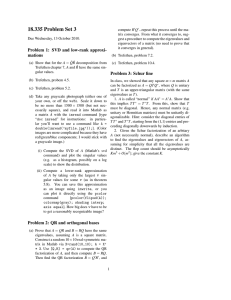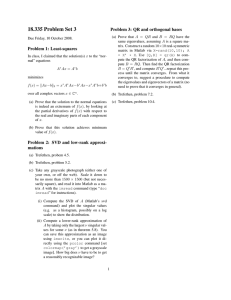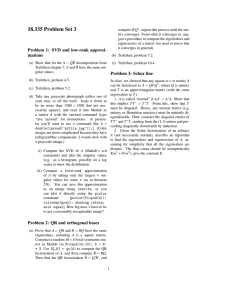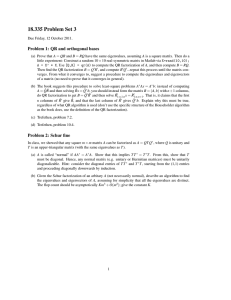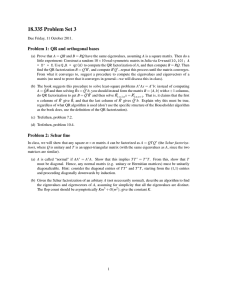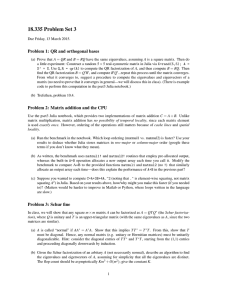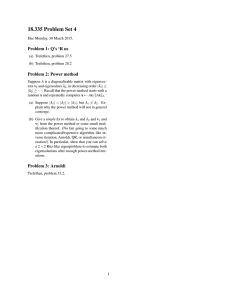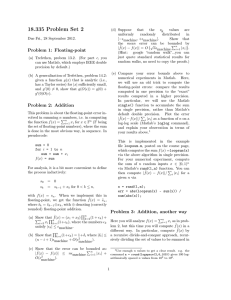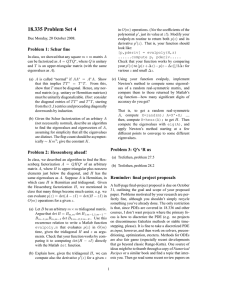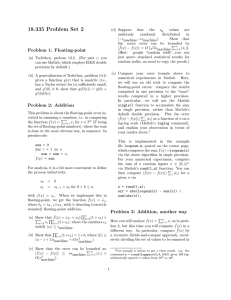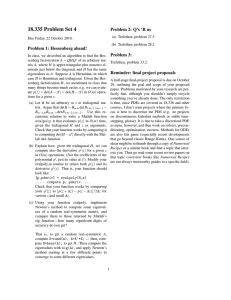18.335 Problem Set 3 Problem 3: Schur fine mations
advertisement
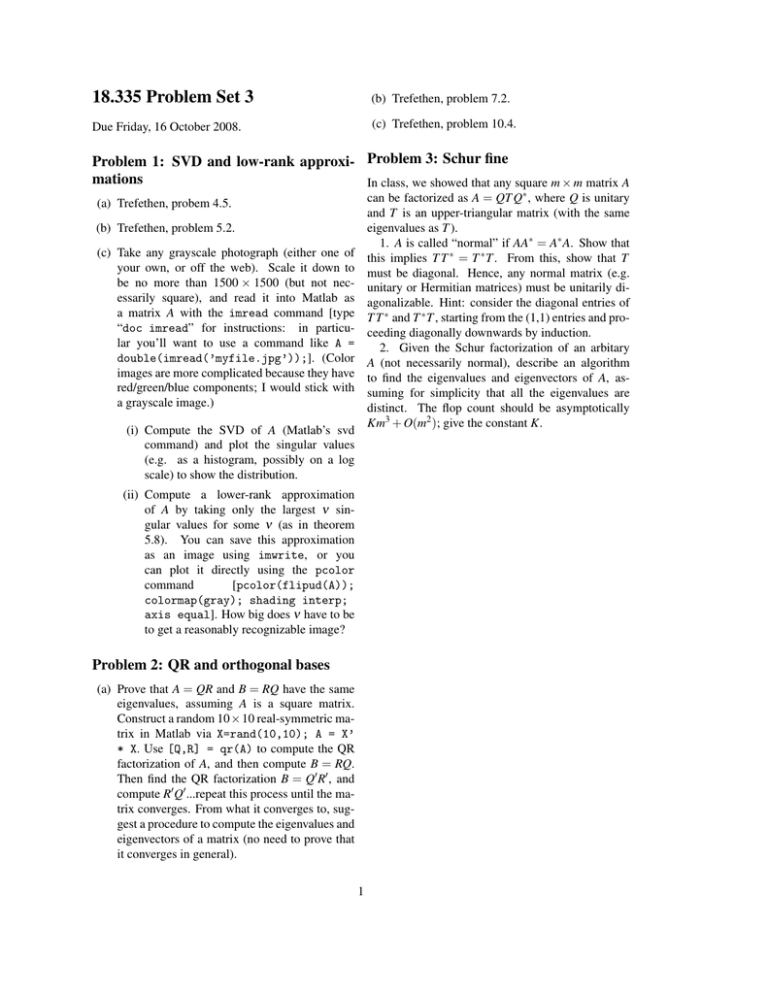
18.335 Problem Set 3 (b) Trefethen, problem 7.2. Due Friday, 16 October 2008. (c) Trefethen, problem 10.4. Problem 1: SVD and low-rank approxi- Problem 3: Schur fine mations In class, we showed that any square m × m matrix A can be factorized as A = QT Q∗ , where Q is unitary and T is an upper-triangular matrix (with the same eigenvalues as T ). (b) Trefethen, problem 5.2. 1. A is called “normal” if AA∗ = A∗ A. Show that (c) Take any grayscale photograph (either one of this implies T T ∗ = T ∗ T . From this, show that T your own, or off the web). Scale it down to must be diagonal. Hence, any normal matrix (e.g. be no more than 1500 × 1500 (but not nec- unitary or Hermitian matrices) must be unitarily diessarily square), and read it into Matlab as agonalizable. Hint: consider the diagonal entries of a matrix A with the imread command [type T T ∗ and T ∗ T , starting from the (1,1) entries and pro“doc imread” for instructions: in particu- ceeding diagonally downwards by induction. lar you’ll want to use a command like A = 2. Given the Schur factorization of an arbitary double(imread(’myfile.jpg’));]. (Color A (not necessarily normal), describe an algorithm images are more complicated because they have to find the eigenvalues and eigenvectors of A, asred/green/blue components; I would stick with suming for simplicity that all the eigenvalues are a grayscale image.) distinct. The flop count should be asymptotically Km3 + O(m2 ); give the constant K. (i) Compute the SVD of A (Matlab’s svd command) and plot the singular values (e.g. as a histogram, possibly on a log scale) to show the distribution. (a) Trefethen, probem 4.5. (ii) Compute a lower-rank approximation of A by taking only the largest ν singular values for some ν (as in theorem 5.8). You can save this approximation as an image using imwrite, or you can plot it directly using the pcolor command [pcolor(flipud(A)); colormap(gray); shading interp; axis equal]. How big does ν have to be to get a reasonably recognizable image? Problem 2: QR and orthogonal bases (a) Prove that A = QR and B = RQ have the same eigenvalues, assuming A is a square matrix. Construct a random 10×10 real-symmetric matrix in Matlab via X=rand(10,10); A = X’ * X. Use [Q,R] = qr(A) to compute the QR factorization of A, and then compute B = RQ. Then find the QR factorization B = Q0 R0 , and compute R0 Q0 ...repeat this process until the matrix converges. From what it converges to, suggest a procedure to compute the eigenvalues and eigenvectors of a matrix (no need to prove that it converges in general). 1
